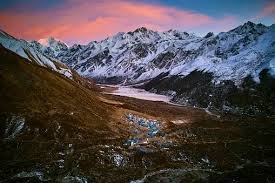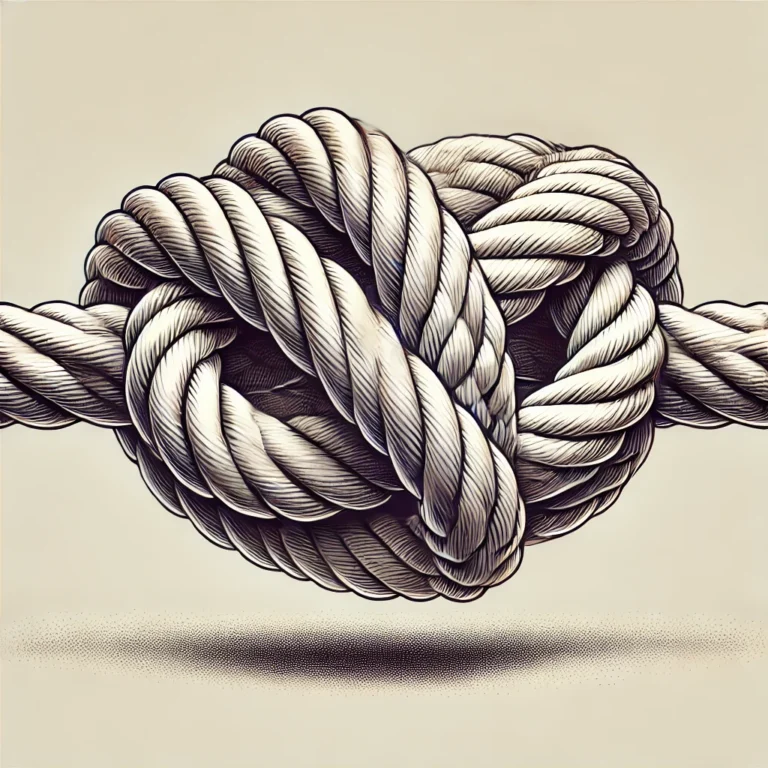What Kind of Food Is Available During the Langtang Trek?
One of the most popular dishes you will come across during the Langtang trek is DalBhat. This traditional Nepali dish consists of steamed rice, lentil soup, vegetables, pickles, and sometimes meat. It is a hearty and nutritious meal that will give you the energy you need for your trek. Another common dish is momos, which are dumplings stuffed with vegetables or meat and served with a spicy sauce. These make for a delicious snack or side dish.
If you’re in the mood for something more Western, you can often find pasta dishes such as spaghetti or penne with different sauces like tomato or cream. These dishes are usually made with fresh ingredients and are a comforting option after a long day of trekking. For breakfast, you can enjoy omelettes, pancakes, or porridge to start your day off right.
In terms of drinks, you will find a variety of options such as tea, coffee, hot chocolate, soft drinks, and even alcoholic beverages like beer or wine. These can be a nice treat to enjoy in the evenings as you relax and reflect on your day of trekking.
Overall, you will find that the food options during the Langtang Valley trekking are varied, delicious, and satisfying. So, don’t worry about going hungry during your 7 days near the mountains – you will be well-fed and ready to take on each day of your adventure!
Breakfast on Langtang Trek
A fulfilling breakfast is essential before embarking on a trekking journey, especially on the Langtang trek where you’ll be walking for hours each day. Starting your day with a hearty meal will give you the energy you need to conquer the trekking trails and reach your destination before dark.
From 7.00-9.00 in the morning, teahouses along the Langtang trek start serving breakfast. The breakfast menu typically includes a variety of options such as bread, eggs, potatoes, pancakes, and soup. These delicious and nutritious food items will fuel you up for the day ahead and keep you going strong throughout your trek.
Whether you prefer bread and chapati, eggs cooked in different styles, pancakes, porridge, or soup, you’ll find a range of choices to suit your taste buds. The teahouses in Langtang serve organic and locally produced food items, ensuring that you get the best quality ingredients to replenish your energy levels. Q Family Adventures
So, if you also believe that breakfast is the most important meal of the day, make sure to enjoy a satisfying breakfast at the teahouses along the Langtang trek. It will set the tone for a successful and enjoyable trekking experience as you explore the beautiful landscapes of the Langtang region.
Bread and Chapati
- Plain Toast
- Plain Toast with Jam or Honey
- French Toast
- Cheese Toast
- Tibetan Bread
- Plain Chapati
- Chapati with Honey, Peanut Butter. Eggs and Baked Beans
Eggs
- Boiled Eggs
- Plain Omelettes
- Scrambled Eggs
- Fried Eggs
- Veg Omelettes
- Cheese Omelettes
Pancakes
- Plain Pancake
- Pancake with Jam or Honey
- Apple Pancake
- Chocolate Pancake
Porridge and Puddings
- Oat Porridge
- Tsampa Porridge
- Apple Porridge
- Honey porridge
- Porridge with cinnamon and raisins
- Muesli with hot milk
- Cornflakes with hot milk
- Rice pudding
- Chocolate pudding
Soup
- Garlic Soup
- Tomato Soup
- Mushroom Soup
- Mixed Soup
In most of the teahouses, you will find organic and locally produced food items and veggies. It will replenish you with energy so that you can start off your trek properly.
Lunch on Langtang Trek
Post breakfast and 2-3 hours of trek, you may eat your lunch in the teahouses that you find on the trail. Usually, the time for lunch is from 11 a.m. to 12 noon. Latest by 1.00 p.m., you will have your lunch.
Langtang region is a remote place without transportation facilities. Either mules or helicopters transport food items to the higher altitudes. So, the locals bring durable and imperishable grains such as rice, lentils, etc which make up most of the lunch menu items.
Rice, lentils and vegetable curry is a popular lunch set for the trekkers in the trail as it is cheaper than other lunch options and is fulfilling at the same time. You will also find a number of options for western food items such as noodles, pasta, spaghetti, etc available on the menu.
Mostly, in the lunch menu, you will find carbohydrate-rich foods so that you get enough calories to keep you going throughout the trek. Here are the food items that you may find in the lunch menu.
Rice
- Dal Bhat (Veg)
- Dal Bhat (Non-veg)
- Rice with chicken curry
- Rice with veg curry
- Cheese fried rice
- Veg fried rice
- Egg fried rice
- Tuna fried rice
- Mixed fried rice
Noodles
- Veg fried noodles
- Egg fried noodles
- Fried noodles with cheese
- Mixed fried noodles
Pasta and Macaroni
- Veg fried pasta
- Cheese fried pasta
- Pasta with cheese and tomato sauce
- Plain macaroni
- Macaroni with vegetables, cheese, and egg
- Mix macaroni
Spaghetti
- Spaghetti with tuna, cheese, and tomato sauce
- Cheese Spaghetti with tomato sauce
- Spaghetti with tomato sauce
- Vegetable Spaghetti with tomato sauce
Momos
- Veg momo
- Buff momo
- Chicken Momo
- Cheese momo
- Potato momo
Pizza
- Chicken pizza
- Mushroom pizza
- Mixed pizza
Generally, these are the food that you find in most of the teahouses. But, you can get other food items depending on the teahouses. Please do note that your food options become limited as you go to the higher altitudes.
Dinner on Langtang Trek
After a long day of trekking through the mountains, nothing sounds better than a hot, freshly cooked dinner at the teahouse you’re staying in. The smell of the delicious food wafting through the air will make your mouth water as you sit down to enjoy a hearty meal.
The teahouses take pride in serving their guests with warm hospitality and hearty dinners that will keep you satisfied and warm throughout the cool mountain nights. The cozy atmosphere of the teahouse will make you feel right at home and ready for a good night’s sleep.
From 7.30 p.m. to 9.00 p.m., the teahouses open their doors to serve dinner to weary trekkers like yourself. The menu options are varied, but one popular choice is Nepali DalBhat, a traditional Nepalese dish consisting of lentil soup, rice, and vegetables. However, if you prefer something else, there are plenty of other delicious options to choose from.
Eating a satisfying dinner at the teahouse after a day of walking will not only fill your hungry belly but also help you sleep better and allow your body to rest and recover for the next day’s adventures. So, don’t hesitate to indulge in the tasty offerings of the teahouse and fuel up for the next day’s trek.
Water on Langtang Trek
Drinking water throughout your trek is essential for your health and well-being. Staying hydrated helps prevent altitude sickness and other serious health issues that can arise from trekking at high altitudes. By keeping yourself hydrated, you are better able to tackle the challenges of the trek and reach your goal successfully.
Fortunately, finding safe drinking water during your trek is not difficult. Teahouses along the trail offer boiled water that is safe for consumption. Additionally, you can purchase mineral water bottles at reasonable prices, depending on the altitude you are trekking in.
For those looking to save money and reduce waste, tap water is available for free at teahouses and on the trekking trails. By carrying a refillable water bottle and water purification tablets or purifiers, you can ensure that the local water is safe to drink.
Natural water sources are also abundant along the trekking trails. Take advantage of these opportunities to refill your water bottle, purify the water, and stay hydrated as you continue your journey. Remember, staying hydrated is key to a successful trek, so make sure to drink plenty of water throughout your adventure.
Drinks on Langtang Trek
Teahouses provide a wide variety of drinks, including non-alcoholic choices. However, since alcohol and caffeine dry the body, it is best to avoid them in high altitudes, even though there are plenty of options accessible during the walk. The refreshments you might encounter on your Langtang hike are listed below.
Tea
- Black Tea
- Milk Tea
- Ginger Tea
- Lemon Tea
Coffee
- Black Coffee
- Milk Coffee
Other Than Tea/Coffee
- Ginger Honey Lemon
- Honey Lemon
Desert/ Cold Drinks/ Hard Drinks
Food and Cost
As you ascend higher on your Langtang trek, the cost of food and drink will increase. Generally speaking, a plate of food for breakfast, lunch, or dinner may cost between $2 and $3 in the lower regions like Syabrubesi. However, the same plate of food may cost $6–$7 at higher altitudes.
This is a result of the upper elevations’ dearth of transit options. The only ways that the teahouses in the higher regions can receive items are via helicopters or mules. Therefore, even for teahouses, the cost of the same commodities is significantly more at higher altitudes than it is in lower places. Naturally, the cost of the dining services there will be higher.
Is Food on the Trail Healthy?
Indeed, every meal and beverage served by the teahouses along the Langtang Trek is healthful. When preparing food, the teahouses typically employ organic goods that are grown nearby. They make sure that food is not served past its expiration date, even if it is packaged.
The majority of teahouses provide safe and suitable water for consumption. To make the water safe to drink, they boil and filter it.
However, because there is no electricity in higher altitudes like Kang Jin Gompa and Langtang hamlet, there is a problem with keeping meat goods. Thus, it’s possible that the meat items you find there aren’t always safe and fresh. Therefore, it makes sense to limit your menu choices to vegetarian fare.
Conclusion
It’s crucial to maintain healthy practices like hand washing and hand sanitizer use while hiking the Langtang region, in addition to consuming a balanced diet. Maintaining your physical fitness and eating a nutritious diet are the only ways to get the most out of trekking experiences.






